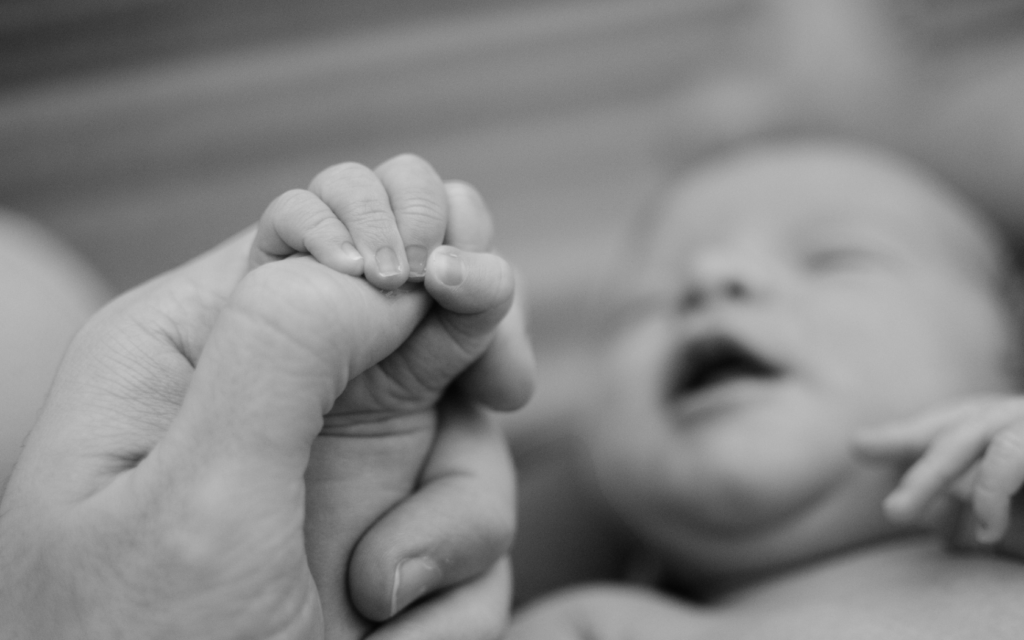Could a doctor’s mistake be the cause of HIE in your newborn? It’s a dreadful thought. But it’s even more dreadful to think that someone made a grave mistake and got away with it. What causes HIE, and how could negligence play a part? Stay with us to find out.

What is HIE?
HIE stands for Hypoxic-Ischemic Encephalopathy. It’s a neurological condition that occurs when there is a lack of oxygen (hypoxia) and reduced blood flow (ischemia) to the brain. This can result in damage to brain tissue. HIE most often occurs in newborns.
HIE is one of the leading causes of death for newborns. The good news is that it’s rare, only occurring in about 1.5/1,000 live births.
HIE Causes
In newborns, the cause of HIE is often related to complications during the labor and delivery process. These complications can lead to a reduced oxygen supply to the baby’s brain. If the medical team fails to address it, the lack of oxygen can cause significant brain damage.
We can group potential HIE causes into two main categories:
- Perinatal Causes (occurring around the time of birth)
- Postnatal Causes (occurring after birth)
Let’s take a closer look at both types:
Perinatal Causes of HIE
Birth Asphyxia: This is one of the primary causes of HIE in newborns. It can result from complications during labor and delivery, such as:
- A prolonged or difficult labor
- Placental insufficiency
- Umbilical cord problems
- Maternal health issues that affect the oxygen supply to the baby.

Placental Abnormalities: Any issues with the placenta can lead to inadequate oxygen and nutrient delivery to the fetus. One potential issue with the placenta is placental abruption, which is the premature separation of the placenta from the uterine wall. Other abnormalities include placental insufficiency which can lead to poor blood flow through the placenta, as well as placenta previa which is when the placenta partially or completely covers the cervix.
Umbilical Cord Problems: A twisted or compressed umbilical cord can restrict blood flow and oxygen delivery to the fetus.
Maternal Health Issues: Conditions in the mother can affect the baby’s oxygen supply and increase the risk of HIE. A few examples are high blood pressure, preeclampsia, or infections.
Postnatal Causes of HIE
Cardiac Arrest: Cardiac arrest can deprive the brain of oxygen and blood flow. There are many reasons why cardiac arrest could happen. For example, the baby might have a metabolic disorder that affects heart function or a severe congenital heart defect.
Near Drowning: Submersion in water or other fluids can lead to oxygen deprivation, resulting in HIE.
Respiratory Failure: Severe lung conditions can be a cause of HIE because they lead to insufficient oxygen intake. One example is respiratory distress syndrome, which is common in premature infants. Severe pneumonia can also lead to HIE.
Trauma: Head injuries can damage blood vessels or impair oxygen delivery to the brain. A baby could suffer head trauma because of an accident, such as a fall. This is why physical abuse, like shaken baby syndrome, can also be a cause of HIE.
Can a Doctor’s Negligence Cause HIE?
Doctors are trained to monitor the baby’s heart rate and other vital signs. Most of the time, they quickly catch and address issues that are known HIE causes.
But sometimes doctors fail to recognize symptoms. Or they may not take them seriously enough. That’s how medical negligence can lead to HIE.

Examples of Negligence-Related HIE Causes
- Improper Monitoring. Healthcare providers fail to monitor the baby’s heart rate and other vital signs during labor. Fetal distress occurs, but they fail to recognize it. This leads to oxygen deprivation and HIE.
- Failure to Perform a C-section. Certain delivery complications can warrant a C-section because they might cut off the baby’s oxygen supply. These include a prolapsed umbilical cord and placental abruption. If a doctor doesn’t order a C-section when it’s necessary, the baby might develop HIE.
- Medication Errors. A healthcare provider might administer the wrong medicine or the wrong dosage. Certain medications that stimulate or slow down labor can lead to complications that affect the baby’s oxygen supply.
- Improper Use of Delivery-Assistance Tools. Improper use of forceps or vacuum extractors can cause head injuries and oxygen deprivation. Lack of oxygen is a major cause of HIE.
- Failure to Recognize and Treat Maternal Health Issues. Certain maternal health issues can cause issues with oxygen supply. Two examples are preeclampsia and gestational diabetes. If a doctor fails to recognize these conditions, a baby could end up with HIE.
- Inadequate Resuscitation. Sometimes doctors have to resuscitate babies experiencing distress at birth. Failure to do this right away can end up leading to further oxygen deprivation and HIE.
Negligence isn’t always the cause of HIE. In most cases, healthcare providers do their best to provide safe and appropriate care during childbirth. But if you have even the slightest suspicion that negligence played a part in your child’s development of HIE, it’s worth investigating.
Why should you take legal action against the negligent party? There are two main purposes of a malpractice lawsuit:
- Hold the responsible parties accountable
- Seek compensation for the child’s medical care and rehabilitation
Want to know what your legal options are? Contact our expert lawyers now for a free consultation.




